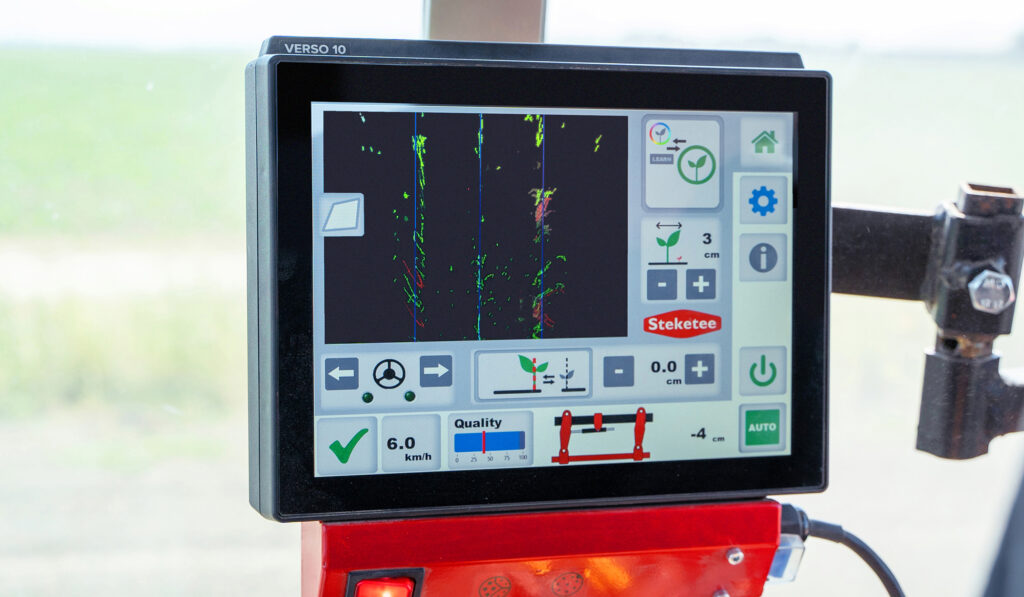Inter-row cultivation is rapidly becoming a hot topic in agricultural machinery with the big implement manufacturers turning to mechanical weed control both at pre-sowing and post-emergence stages of the crop cycle.
There are two general approaches emerging to controlling weeds in an established crop; the first is to precisely locate each individual plant and work around it, while the second is to identify weeds within a crop and remove them mechanically.
Expanding the horizon
Steketee, the wholly owned subsidiary of Lemken, is pursuing the second option through use of spectral analysis of the plants encountered as the hoe moves down the rows.

This is not particularly new technology and it is already in use worldwide, but what the company has done is push the wavelengths it uses out into the blue end of spectrum, allowing more reliable identification of plants with a high proportion of blue in their leaves.
Its latest IC-Light+ camera control with extra blue sensitivity, which still works at the near-infrared, offers clear advantages in mechanical weed control, especially in the cultivation of onions, leeks, broccoli or red cabbage when used with Steketee hoeing machines.
Weed control at 15km/h
The standard IC-Light camera system, developed by the company itself, captures the RGB colour range and reliably distinguishes between hues of green and red.

The new IC-Light+ camera can now also capture hues of blue, allowing even very young plants or plants with a particularly fine structure, to be better identified and shown.
The camera easily handles onions down to the size of a pin, according to the company.
The IC-Light+ camera is operated via the IC-Light terminal and allows hoeing as close as 2cm from crop plants at forward speeds of up to 15km/h.
The camera detects up to five rows of plants at a time and controls the steering of the hoeing machine between the rows.

